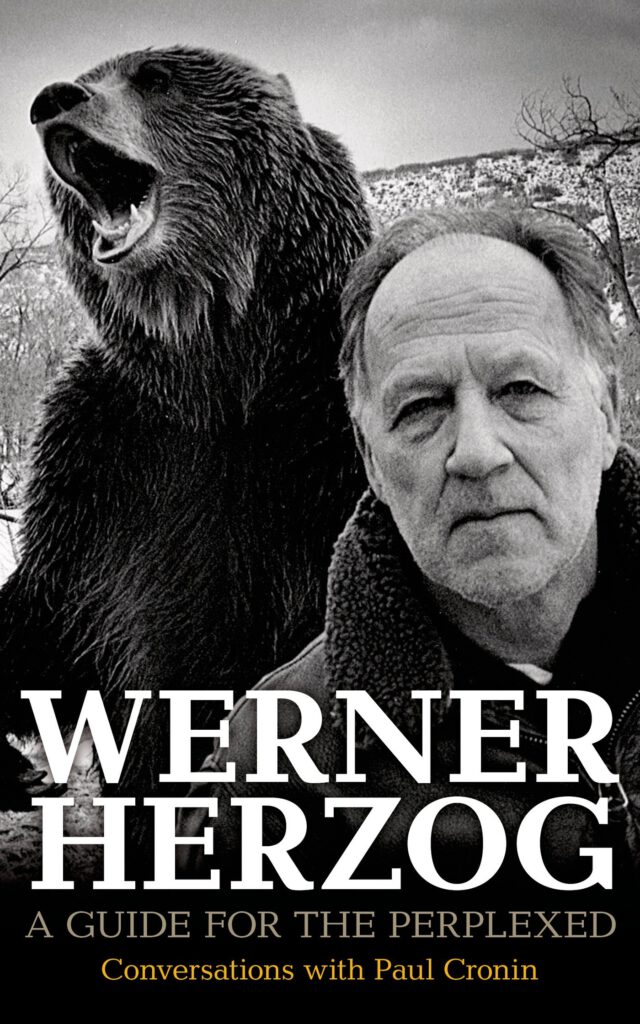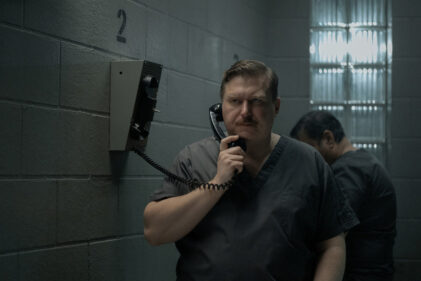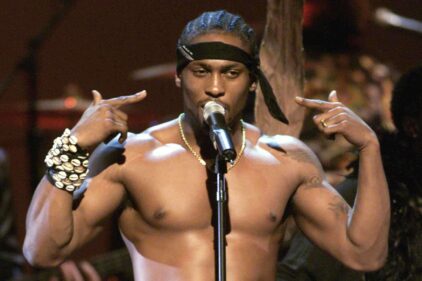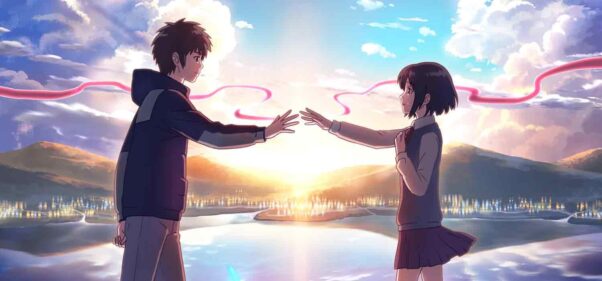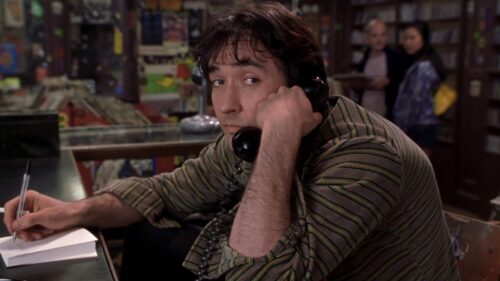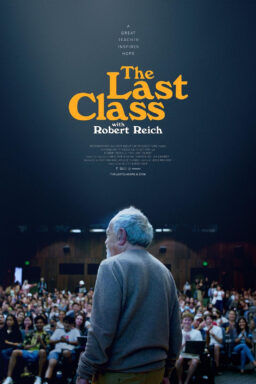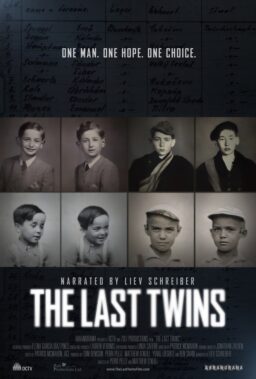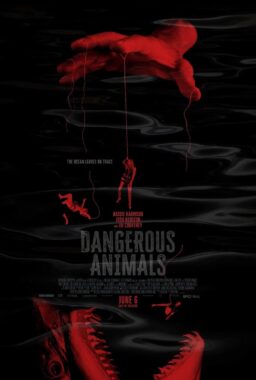Paul Cronin has been conducting interviews with Werner Herzog for years and turned them into the massive, impressive, career-spanning “Werner Herzog: A Guide for the Perplexed,” and the publishers were kind enough to offer us an excerpt to share with you. Of course, we chose Herzog speaking about a film he dedicated to Roger Ebert, “Encounters at the End of the World.” Read about the production of the film below and buy your own copy here.
Encounters at the End of the World was filmed in Antarctica.
I was drawn to the area when I saw the footage Henry Kaiser shot under the Ross Ice Shelf, which appears in “The Wild Blue Yonder.” After seeing the images I told him I wanted to go diving in Antarctica myself, and he proceeded to explain how dangerous it is. The water temperature is below freezing, compasses are useless because, being so close to the magnetic pole, needles always point straight up or down, and the divers – who explore under a twenty-foot ceiling of ice – are at constant risk of being swept away by tidal currents. Regardless, they swim untethered without safety lines, as such things might impede their work, which means they have nothing to assist them in finding the exit holes at the surface. It’s fatal if they aren’t able to orientate themselves quickly enough. You can’t expect valuable resources to be spent rescuing some amateur trapped under the ice, so it was clear I would never have a chance to dive down there myself.
Henry told me about the Antarctic Artists and Writers Program of the National Science Foundation, to which anybody can apply. This was fortunate, as not being a pilot, scientist, mechanic or chef I had little to contribute to the community in Antarctica. I made a strange, wild application, explaining that though I was curious about insanity among mammals and, specifically, derangement in penguins, I wasn’t going to make a film about the animals. My application made no secret of the fact that I was interested in certain species of ants that keep flocks of plant lice as slaves, milking them for droplets of glucose, and wondered why a sophisticated animal like a chimpanzee doesn’t utilise inferior creatures, for example straddling a goat and riding off into the sunset. To my surprise, the National Science Foundation invited me down. There are Nobel Prize winners lined up hoping to go to Antarctica, so I have no idea why my application was successful. Once I finished the film, but before I screened it to anyone, the Foundation told me they hoped it could be used as an educational tool. I told them perhaps in a poetry class, but probably not a science one. I later learnt that James Cameron applied to make a film about Antarctica, though we’ll probably never know what his plans were because his application was turned down. It seems that the minimum number of people in his crew would have been something like thirty.
Maintaining a single person per day in Antarctica costs about $10,000. Every piece of equipment has to be flown in from New Zealand, eight hours away by aeroplane, and every drop of water has to be produced through the desalination of ocean water; a single glass requires an equal amount of gasoline. Then there is transportation, heat, food, logistics and electricity to take into consideration. Knowing this, the plan was to fly down with the smallest crew possible: cameraman Peter Zeitlinger and me as sound recordist. Our base was McMurdo Station, the scientific centre and logistical hub that provides fixed laboratory facilities for research, which sits on an island in the Ross Sea, a bay the size of France, on a continent as big as North America, where a thousand men and women – all in pursuit of cutting-edge science – live together. From there, Peter and I travelled to different satellite camps, like the one from which the divers operate, collecting organisms for study. At least three new species were discovered while we were there.
Did you plan anything before you left for Antarctica?
Nothing. There was no testing of the waters; we were tossed down there and had to come back six weeks later with a film. I was flying into the unknown and had no idea who I was going to meet or what sort of film I was going to make. I looked at some photographs and read a little about Antarctica before we left, but knew that as soon as we arrived I had to keep my eyes open, act fast and follow my instincts.
The moment Peter and I stepped out from the aeroplane on the ice runway, he turned to me and said, “How, for God’s sake, are we going to explain an entire continent to an audience back home?” I had a flash of an idea. I was forced to learn Latin for nine years, and ancient Greek for six, none of which I ever really enjoyed at school, though today I’m always digging into the literature of antiquity. Homer’s epics have sunk in so deep that I could speak German in hexameters if I wanted to. One of my all-time favourites is Virgil’s Georgics. Virgil grew up as a farm boy in northern Italy, and in his book he writes about agriculture, country life and working the land. The book is an incantation of the magnificence of the beehive and the horror of a pestilence in the goat stables. He writes about tree pruning and cattle in the field; he names the glory of the clouds moving across the land and the oxen moaning. My immediate response to Peter’s question, after we had touched down in Antarctica, was, “We’ll do it like Virgil in his Georgics. He never explains anything, he just names the glory of the land. Let’s do the same.”
“Encounters at the End of the World” – which was edited down from about sixty hours of footage – is an invocation of all that is wonderful on the planet, an articulation of my amazement and wonder at the Antarctic landscape, a celebration of the continent. Virgil gave me great consolation while I was there, which is why at the end of the film I use music from a Russian Orthodox church choir with a basso profundo, one octave lower in pitch than a regular bass, an incredible voice that establishes the glory of one saint after another merely by naming them. One of my targets was Mount Erebus, which is more than twelve thousand feet high and of particular importance for scientific study because the inner Earth is directly exposed inside the crater. Only two other such volcanoes exist on the planet. The glowing magma continuously spits out lava bombs, some of which are the size of Volkswagens. There is a strange curiosity we humans have for the power of volcanoes, perhaps because they are capable of wiping out entire species.
Was it a difficult film to make?
Not particularly. Everyone seems caught in the cliché of human toil that Amundsen, Scott and Shackleton had to endure, but McMurdo is an ugly mining town, full of noisy construction sites, earth-moving machinery and climate-controlled housing facilities with warm beds, a cafeteria and bar, and an ATM machine, plus an aerobic studio and yoga classes. Out in the field, of course, it gets a little harder. We were there during the summer, in November and December, but if you stay throughout the austral winter – five months of permanent darkness – evacuation is impossible, so your wisdom teeth and appendix have to be removed as a precaution, even if they’re perfectly healthy. Adapting to weeks of permanent daylight can be difficult. You have to wear serious protection when the sun is out, otherwise snow blindness sets in within hours.
We weren’t allowed to bring our own boots and parkas; everyone is issued with these things upon arrival. If you use regular boots, you might be able to hold on to your toes down to about –25ºC, but after that frostbite sets in. We were sure to test our camera and sound recorder in a facility in Los Angeles at temperatures of around –20ºC. I took two recorders with me to McMurdo, but almost immediately had to abandon the more sophisticated one because it had tiny buttons and was impossible to operate while wearing gloves. As soon as we arrived at McMurdo we lost about a week because we were obliged to undertake a mandatory survival course – which involved learning to build trenches and igloos – a course in radio communications, and one in snowmobile riding. I found the authorities there too concerned for my personal safety, and resented having to spend so much time on these things; it was a little excessive for my liking. Having said that, three days after arriving I had an accident on a steep slope when an eight-hundred pound snowmobile rolled over my body. For weeks afterwards I was sore everywhere and could barely bend down to tie my shoelaces.
The film benefited greatly from the spirit of the Antarctic Treaty, which came into force in 1961 and which I consider to be one of the finest documents of the civilised world. It banned military activity on the continent and established the area as a scientific preserve, committing an entire landmass to the principles of peace and knowledge. There is also an unequivocal ban on nuclear testing or dumping of radioactive waste. The treaty is one of the most potent manifestations of civilised behaviour among nations in modern history. I remember a time when at least a dozen countries claimed segments of the continent as their national territory, but Antarctica has no government as such; it belongs to no one, and while making the film I was witness to the extraordinary international co-operation you find there. In the film you see the mysterious, surreal, frozen sturgeon, which sits under the mathematically true South Pole, stashed away in some kind of shrine, surrounded by garlands of popcorn, in a tunnel that is permanently –70ºC. Russian scientists from the Vostok Station – which is particularly
inaccessible – had run out of basic provisions and made it to the Amundsen-Scott Station asking for badly needed food. As a gift, they brought the fish and some caviar to barter for noodles.
If Antarctica represents anything, it’s stark realism. Sam Bowser, a scientist and diver who works at the field camp, is a fan of sci-fi B-movies, and is always showing his colleagues films full of monsters and extraterrestrials, like Them!, starring giant ants that have mutated because of atomic-bomb tests in the middle of the desert. But this is kindergarten compared to the real world under the ice, the slimy blobs with ensnaring tendrils and ferocious mandibles that tear their prey apart. No wonder the mammals of prehistory retreated from the oceans to get on with their evolution in the relative sanctuary of dry land.
You filmed with a wonderful array of people.
The vast landscape of the continent is unique, but “Encounters at the End of the World” is more about the inhabitants of Antarctica than anything else. There is significant science being done there, which attracts a certain kind of person, and behind every door at McMurdo is an extraordinary character. With no indigenous population, no one there has anything in common other than a shared attraction to this immense, unspoilt and untouched area of the earth. Someone told me that everybody who isn’t tied down falls to the bottom of the globe.
Some of the people in “Encounters” I met only a few minutes before I filmed with them, and in some instances our conversation lasted not much more than the time you see them on screen. I encountered Doug MacAyeal, an American glaciologist, thirty minutes before his flight for New Zealand was due to leave, and found what he was talking about so interesting that I insisted he film with us. It was warm in that room, but I asked him to keep his enormous red parka on because it would have been ridiculous having him talk about ice floes if he had been wearing a T-shirt. We talked about this and that, but there was a lot of noise coming from a nearby group of Italians, who were celebrating and drinking Chianti because their national football team had just won a match. Once I had quietened them down only twelve minutes remained before MacAyeal’s flight took off. I looked him in the eye and said, “I don’t want to hear from the scientist. I want to hear from the poet.” He nodded and started talking about how he had come to Antarctica to study an iceberg, and soon realised this particular iceberg wasn’t just bigger than the one that sank the Titanic, it was bigger than the country that built the Titanic. The sheer size of the continent is awe-inspiring. Perceptions of scale need to be recalibrated.
A utility mechanic who had escaped from behind the Iron Curtain was still too traumatised to talk about his experiences. His rucksack, containing a sleeping bag, a tent, clothes and cooking utensils, was by his side at all times; he was prepared to leave McMurdo at a moment’s notice and explore new horizons. Then there was Stefan Pashov, a Bulgarian philosopher who operates heavy machinery at McMurdo. From the age of five his grandmother would read to him from The Iliad, The Odyssey and The Argonautica, literature that sparked something powerful within. “It’s when I fell in love with the world,” he explains. That really struck a chord with me; it was wonderful to discover such a kindred spirit so far from home. He found it perfectly logical that we met in Antarctica because it’s where professional dreamers end up. Another young man, a linguist, was thriving in an environment where people with doctorates were washing dishes on a continent with no indigenous languages.
